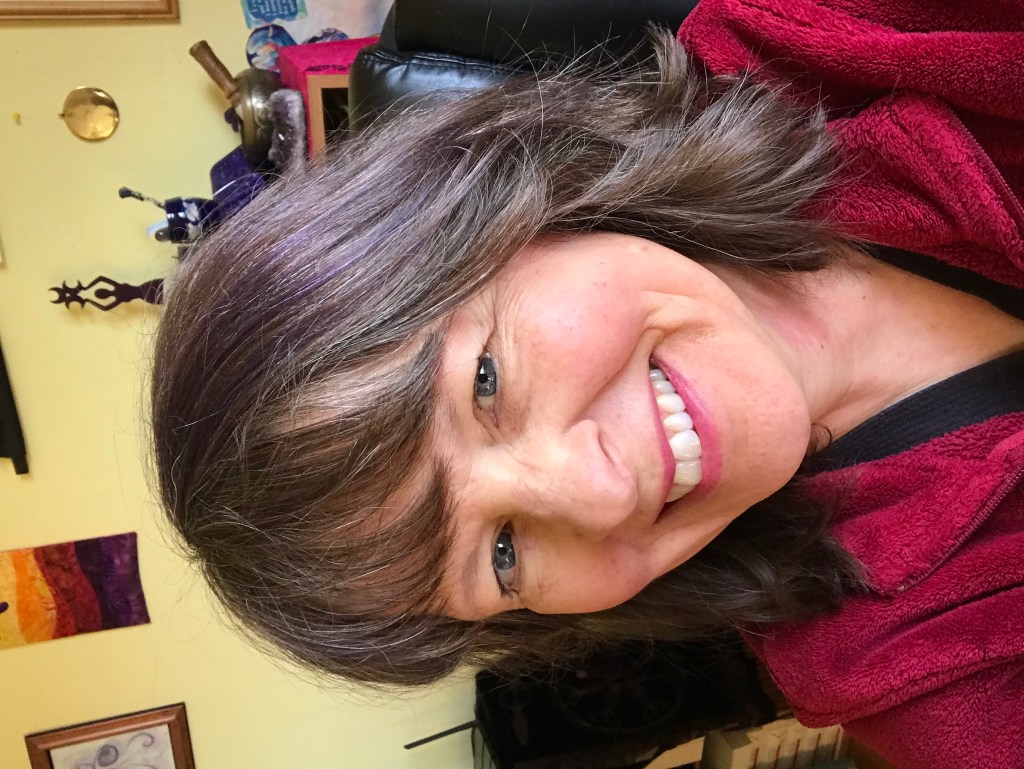Heal Emotional Wounds
of Chronic Pain
Body Scanning for Pain Management


What is Body Scanning?
Body Scanning is a great pain management tool. I originally learned it in physical therapy while being treated for fibromyalgia. The PT taught me to scan my body and to notice any areas of discomfort, aches, or pain. Elizabeth Scott, MS in her article Body Scan Meditation stated, “The goal is not to relieve the pain completely, but to get to know it and learn from it so you can better manage it.”
Crystal Raypool said in her article for Healthline, “But outcomes…such as increased awareness of your body and emotional state, can help change the way you think about that pain. Increased awareness and acceptance of pain can lead to an improved outlook.”
How do you Start Body Scanning?
When you first begin, you are building the muscle memory of how to body scan. Then when you need it, you will easily be able to pull it forward.
Phase One

- Find a comfortable place and sit up with your feet on the floor.
- Close your eyes.
- Take a few deep breaths in through your nose and out through your mouth. Return to your normal breathing.
- Start at the top of your head and notice any areas of tension or discomfort.
- Move slowly through the rest of your body.
- Don’t get lost in your pain. Just notice.
- When you have finished, thank your body. Take a few deep breathes in and out. Open your eyes. You should feel more relaxed.
Now do it quickly so that you can perform scanning throughout the day. Do not save this just for intense pain. Whenever you feel discomfort, scan your body.
Body scanning is excellent to do right before you go to sleep. You might even notice that you fall asleep faster, and who wouldn’t like that?
Phase Two

Are you comfortable with Phase One? Is it easy to use now? Then you are ready for Phase Two.
Follow all the steps above from phase one. In Phase Two, add each joint and bone. Think of this step like an x-ray as you view your entire body inside and out.
You are building your knowledge so that this becomes one of your regular pain management tools.
Phase Three

Use phase three initially, when you have intense pain. Then when you are calmer, use it every time you scan.
- Find a comfortable place and sit up with your feet on the floor.
- Close your eyes.
- Take a few deep breaths in through your nose and out through your mouth. Return to your normal breathing.
- Place your attention on the spot with pain. Breathe in and out.
- Now, find a place with no pain on the opposite side of your body. For example: If it is a right knee, use your knee on the left side if it is pain-free.
- With your thoughts, transfer that feeling of comfort into the original painful place. Keep doing this until you feel the tension relax.
- When you have finished, thank your body. Take a few deep breathes in and out. Open your eyes. You should feel calmer.
Phase Three Example

My nerve is flaring, and I feel taser like pains in my left eye. I breathe in and out and focus my attention on my left eye. I simply notice it.
Now, I place my attention on my right eye because it is pain-free. I take this feeling of comfort and send it to my left eye until the tension releases.
Notice that I did not say, “Until the pain is gone.” Remember that this is about your body relaxing. Pain is always less if you are calmer.
Body Scanning Videos
Want to see some videos on body scanning? Take a look at the 3-minute, 5-minute, and 10-minute ones by Elisha Goldstein, Ph.D.
Spend time practicing this, so that it becomes an automatic pain management tool. The great thing is that it takes nothing except FOCUS to do it. You can use this during most anything you are doing and get relief. Woo-Hoo!
Need More Ideas? Pop over to my Pain Management Tools and Resources pages.
Hugs!
Gail Sinclair, MHt, CNC is a hypnotherapist who helps those living with chronic pain go from discomfort to thriving by using hypnosis, pain management tools and resources.
She is a Master Hypnotherapist, Nutritional Consultant, and a Reiki Master Teacher. She has over 20 years in healing work and is an international award-winning speaker.
Gail lives in Portland, OR with her delightful husband, son, and cat. She can be found cooking, knitting, writing, and figuring out new ways to thrive with Trigeminal, and Occipital Neuralgia.
You can reach her at gailthriveswithchronicpain@gmail.com.
